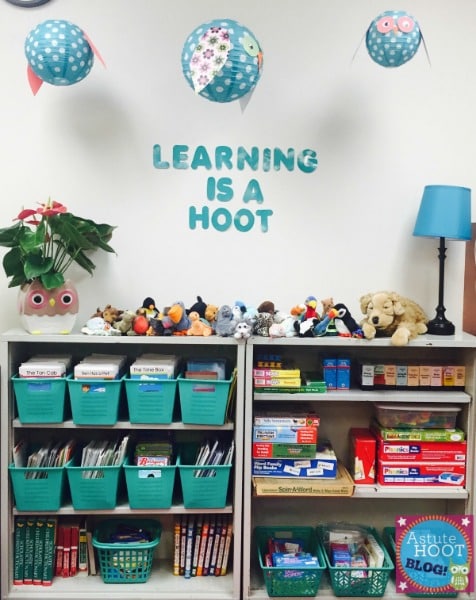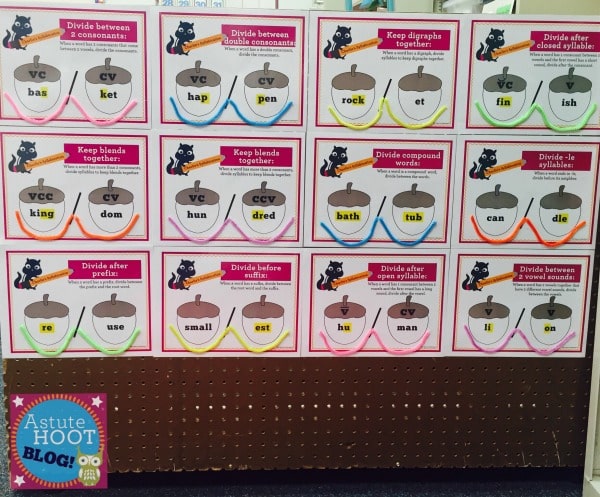
Being a Special Ed teacher is more than a profession but a passion. It takes an understanding mind and a loving heart to be an effective one! Not to mention the exceptional attitude one possesses to face everyday challenges.
We believe that a great special ed teacher can be more efficient with the help of a well-planned and managed resource room.
Thoughtco mentioned that “Resource room is not just a place, but also a placement. Because the resource room removes a child from a general education classroom for even part of the day, it is increasing the “restrictiveness” which is defined and proscribed except when necessary by IDEIA (Individual with Disabilities Educational Improvement Act.) Resource rooms is a separate setting, either a classroom or a smaller designated room, where a special education program can be delivered to a student with a disability individually or in a small group. It is for the student who qualifies for either a special class or regular class placement but needs some special instruction in an individualized or small group setting for a portion of the day. Individual needs are supported in resource rooms as defined by the student’s IEP. ”
(The full article here: “Introduction to Special Education Resource Rooms” will inform you about;
- How long is a child in the resource room?
- The teacher’s role in the resource room
- How resource rooms help students’ individual needs.
We know that Special education is a “service for children rather than a place where such children are sent.” But children who are in need of a “resource room” can be served better if the said room is well planned and managed.
This guide How to Plan and Manage your Resource Room released by brighthubeducation will help you develop a cozy environment focused on the utmost care and consideration of your students.
- Reviewing IEP’s and Communicating with Parents
One of the most helpful ways to begin is to see what your student’s challenges will be. To do this you may be able to access their files and look through the IEP’s so you can find and provide the best materials for them. Communication with the parents at the beginning of the year is very helpful, because they know the most intimate information.
- Designing a Creative Learning Environment
How can you turn a white-walled, empty room into something of beauty and learning? Begin with the placement of desks and tables, which need to be spaced to where the students have plenty of room so they are not distracted by other learners. Often, children with special needs are very sensitive about personal space and desks should not be placed too close to other students. (Be careful not to make children with special needs feel isolated by placing them too far from other students.) Horseshoe tables can work well for small group work. A small rectangular table can work well for individual testing and art.
- Creating a Calming Space for Individual Students to Regulate Emotions
Designing an area where a child may go if they are angry, sad, or feeling scared can help you throughout the year. students can go there freely or by teacher request if a child is in need of gaining self-control. The teacher or assistant can also be there to help calm the student.
- Developing a Schedule
A busy schedule might begin like this:
Greet students individually as they enter.
Then, they are brought over to get their morning folders where individual goal work awaits them. (For example, some students may be working on writing their name or answering a series of yes or no questions, such as identifying their phone number or their addresses. Other important educational goals such as shapes, addition, or letters, may follow.)
Morning breakfast for some of the children who require this, would be served.
- Communication Circles
Communication Circles can be done on 2 or 3 days a week. In Communication Circles, the students come together to share what they did over the weekend, sharing important events coming up in their lives. Parents of child who is nonverbal could take home a communication device on which the parent can record what their child did over the weekend. Alternatively, the parent could write a note and the teacher could record what the parent wrote. Students, who can speak, share what they did over the weekend.
- Morning Meeting and Centers
Morning Meeting can be done directly after Communication Circle. This is where the calendar, weather and learning topics are shared. Music and big books are very effective to use during this time.
- Project Work and End of the Day
After lunch and recess, project work on a specific topic such as Plants, The Human Body, etc. can be explored. Ending the day with a meeting can be a good way to discuss how the class is doing on project work.
- Creativity and Structure Help with IEP Documentation
As you implement the projects and centers, students will be excited to see what you have in store next and will have an opportunity to work on their personal IEP goals.
So, are you ready to set-up your resource room?
We found this interesting blog entry from astutehoot:tools for the wise teacher, “Essentials of a Special Ed Resource Room.”
- Strategy-Based Bulletin Boards and Learning Centers:
READING
MATH
WRITING
2. Reading Corner:
3. Sensory Support:
Knowing that many of my new students would need support with sensory issues, I prepared various options for them. I have flexible seating arrangements using wiggle cushions, exercise balls, and lap desks. Also, I put together a sensory basket containing Play-Doh, squeeze balls, Legos, Unifix cubes and a timer for 2 of my students. Lastly, I signed up for a Go Noodle account and we use this for brain breaks.
Can’t get enough of Resource Room Tips? Here’s another helpful Resource Room – Tips for a working model by Susan Jones, M. Ed of Resourceroom.net
- Be Prepared.
- Establish communication routines early and thoroughly.
- Be Proactive.
- Be Provocative.
- Avoid the “enabling” trap.
- Avoid the “give them a fish” trap.
We are not affiliated with any educators/bloggers mentioned in this article. But we thought that they shared valuable tips and thoughts regarding resource room that can help your special ed students unleash their fullest potentials.
See Epic Special Education Staffing Special Ed Teacher Jobs Today







